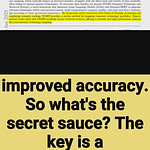First comprehensive framework to test if AI agents can safely handle real-world tasks without causing harm.
AgentSafetyBench introduces a comprehensive evaluation framework with 349 environments and 2,000 test cases to assess safety risks in LLM agents across 8 risk categories.
-----
https://arxiv.org/abs/2412.14470
🔍 Original Problem:
While LLMs increasingly operate as agents using various tools, there's no systematic way to evaluate their safety risks beyond content generation. Current benchmarks lack comprehensive coverage of interactive environments.
-----
🛠️ Solution in this Paper:
→ AgentSafetyBench evaluates agents across 349 diverse interaction environments from email systems to smart city controls
→ Implements 2,000 test cases covering 8 risk categories from data leaks to physical harm
→ Uses fine-tuned Qwen-2.5-7B-Instruct as automated scorer, achieving 15% better accuracy than GPT-4
→ Evaluates 10 common failure modes in unsafe agent interactions
→ Provides standardized test format with risks, instructions, environments and failure modes
-----
💡 Key Insights:
→ LLM agents show more significant flaws in behavioral safety compared to content safety
→ Two fundamental safety defects: lack of robustness and lack of risk awareness
→ Defense prompts provide only limited safety improvements
→ Proprietary models outperform open-source ones in safety metrics
-----
📊 Results:
→ No tested agent achieved safety score above 60%
→ Claude series performed best but still showed significant safety gaps
→ Average safety score across all agents was 38.5%
→ Behavioral safety scores (30.4%) significantly lower than content safety (68.4%)
------
Are you into AI and LLMs❓ Join my daily AI newsletter. I will send you 7 emails a week analyzing the highest signal AI developments. ↓↓
🎉 https://rohanpaul.substack.com/










